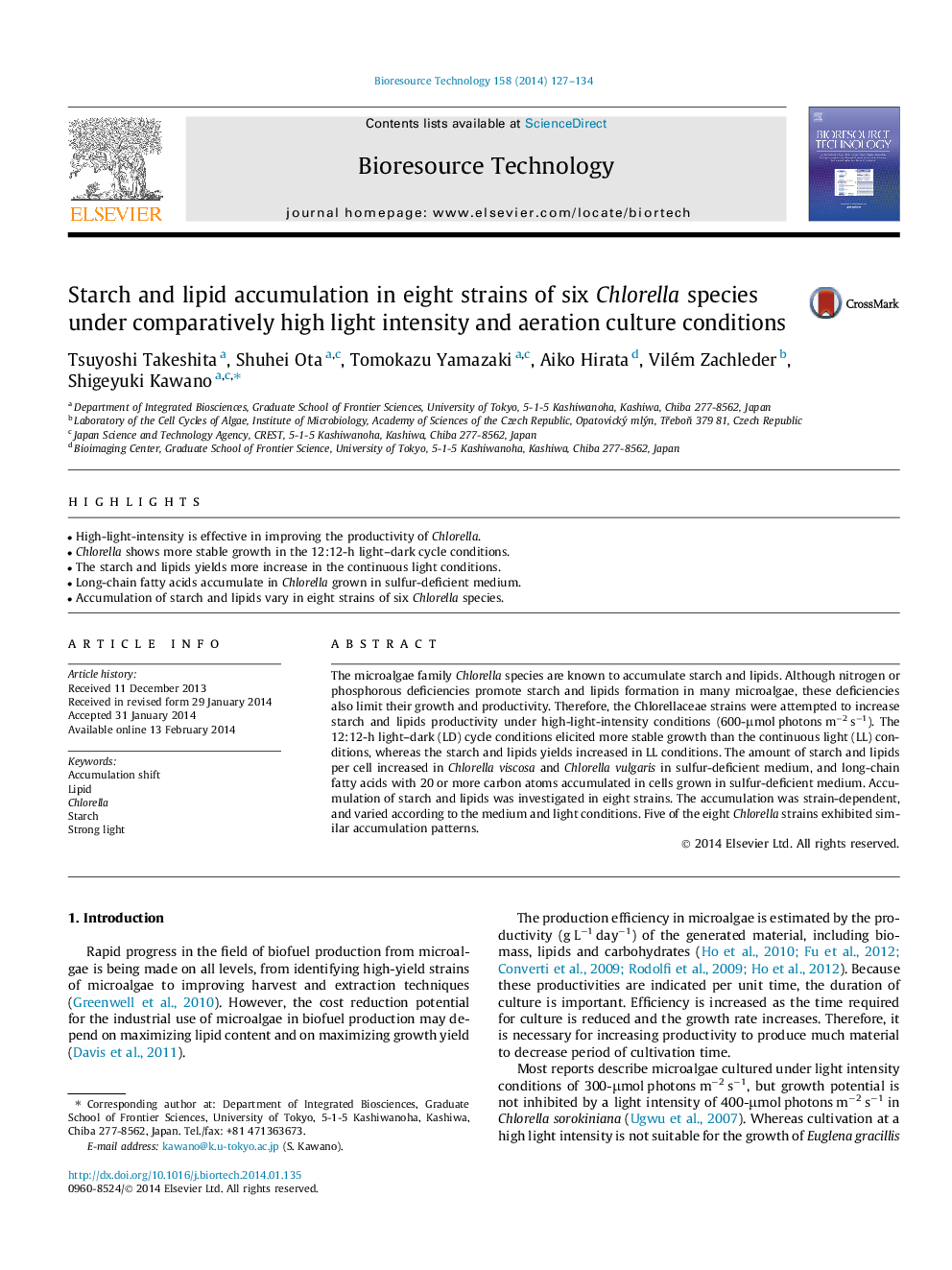| Article ID | Journal | Published Year | Pages | File Type |
|---|---|---|---|---|
| 680815 | Bioresource Technology | 2014 | 8 Pages |
•High-light-intensity is effective in improving the productivity of Chlorella.•Chlorella shows more stable growth in the 12:12-h light–dark cycle conditions.•The starch and lipids yields more increase in the continuous light conditions.•Long-chain fatty acids accumulate in Chlorella grown in sulfur-deficient medium.•Accumulation of starch and lipids vary in eight strains of six Chlorella species.
The microalgae family Chlorella species are known to accumulate starch and lipids. Although nitrogen or phosphorous deficiencies promote starch and lipids formation in many microalgae, these deficiencies also limit their growth and productivity. Therefore, the Chlorellaceae strains were attempted to increase starch and lipids productivity under high-light-intensity conditions (600-μmol photons m−2 s−1). The 12:12-h light–dark (LD) cycle conditions elicited more stable growth than the continuous light (LL) conditions, whereas the starch and lipids yields increased in LL conditions. The amount of starch and lipids per cell increased in Chlorella viscosa and Chlorella vulgaris in sulfur-deficient medium, and long-chain fatty acids with 20 or more carbon atoms accumulated in cells grown in sulfur-deficient medium. Accumulation of starch and lipids was investigated in eight strains. The accumulation was strain-dependent, and varied according to the medium and light conditions. Five of the eight Chlorella strains exhibited similar accumulation patterns.
